
Contents of the page
- 1 Causes of lumbar spine disease
- 2 Symptoms of the disease
- 3 Various types of treatment for intervertebral hernia
- 4 Hernia of the lumbar spine
Back pain is one of the first signs that makes the patient consult a doctor. It can manifest itself at different times, but most often it is provoked by physical activity. The condition, when the pain arises abruptly, is typical for the hernia of the lumbar spine, it is in this area that it is formed most often.
Both men and women are affected, but most often male patients. This is connected with many factors, which will be considered below. Symptomocomplex disease manifests equally, so in most cases, the diagnosis is not difficult to put.
The most common sufferers are people over the age of thirty, but cases of debut of the disease are described at an earlier age. In children's practice is almost not found, if it is not related to genetic characteristics.
Causes of lumbar spine disease
 The following causes of the onset of the disease:
The following causes of the onset of the disease:
- unbalanced physical activity;
- trauma to the back and lumbar spine;
- bad habits;
- congenital disorders of the musculoskeletal system;
- unbalanced power;
- patient overweight;
- pregnancy and its consequences;
- degenerative diseases of the spine( osteochondrosis, scoliosis).
Strangely enough, the cause of the formation of herniated intervertebral disc, may appear as excessive and unbalanced physical stress, and its absence at all. This is due to the fact that with improperly planned physical activity, with constant pressure on the spine, the height of the intervertebral disc is narrowing and, as a result, microtraumatism occurs.
With little physical activity( sedentary lifestyle), as a result of stagnant phenomena, there is a disruption of the supply of the disk, as a result of a small supply of the necessary substances.
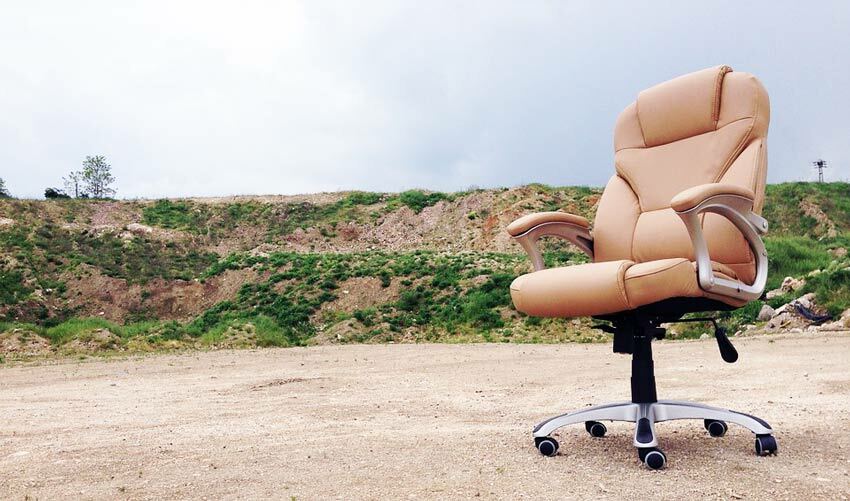
It should be noted that there may be several reasons for the development of a hernia of the lumbar spine. Therefore, the treatment of this disease is complex, aimed at the maximum elimination of all factors. Food should be balanced, with the necessary content of macro- and microelements needed for bone and cartilage structures.
Spinal trauma plays an important role in the development of the disease. Unfortunately, some blows, bruises, falls are not noticeable for the patient. They do not conduct treatment and in most cases are not even examined for fractures. But after some time, with the appearance of the first complaints, the patient begins to remember about the traumatic episode, but, unfortunately, the process of the development of the disease has already begun.
Even microtraumas lead to the fact that a person imperceptibly begins to redistribute the load on the spine, which gradually eventually leads to disruption of the integrity of the intervertebral disc. So it turns out that even excluding all the causes of the disease, it is not possible to fully restore the intervertebral disk.
Symptoms of the disease
 The main symptoms of the disease depend on the size of the hernia in the lumbar spine. The process does not develop in a matter of days and weeks, but for several years. It should be noted that this disease is characterized by repeated exacerbations. Therefore, it is possible to isolate the general symptoms of the disease and the specific ones.
The main symptoms of the disease depend on the size of the hernia in the lumbar spine. The process does not develop in a matter of days and weeks, but for several years. It should be noted that this disease is characterized by repeated exacerbations. Therefore, it is possible to isolate the general symptoms of the disease and the specific ones.
Common symptoms include:
- periodic pain in the lumbar spine;
- quickly passing back pain;
- in position on the back, the patient experiences relief;
- with time you can note the violation of posture, due to the fact that a person is trying to take a position that will not lead to discomfort in the back.
 In case of such complaints, it is necessary to consult a doctor, so that a complex treatment is prescribed. We must not forget that one of the main mechanisms of development of a hernia of the spine is a violation of its nutrition.
In case of such complaints, it is necessary to consult a doctor, so that a complex treatment is prescribed. We must not forget that one of the main mechanisms of development of a hernia of the spine is a violation of its nutrition.
This is also associated with a violation of the blood supply to the muscles and tissues that surround the spine. If you do not carry out treatment, then a vicious circle is formed, which will accelerate the development of the pathological condition. When all the prescriptions are fulfilled, the process of forming the intervertebral hernia can be significantly inhibited.
If the medical and preventive measures are not observed, the patient has the following specific symptoms:
- pain shooting and prolonged;
- increases with minor movement or cough, causing the patient to take a forced position;
- pain most often spreads into the foot or buttock, resulting in the person can not move;
- impaired sensation, weakness in the legs;
- can manifest violations of pelvic functions.
 In addition to the main neurological symptoms, you can add increased blood pressure, dizziness and headache.
In addition to the main neurological symptoms, you can add increased blood pressure, dizziness and headache.
The physician should carefully collect an anamnesis of the disease, to determine all the provoking factors in the onset of the disease. Diagnosis of the disease is based on general clinical signs and complaints of the patient. In addition, magnetic resonance imaging of the lumbar spine is performed.
It is on these pictures that you can reliably determine the localization of the hernia, its size, and their number. Depending on the data received, the doctor then decides on the tactics of treatment, which may not exclude surgical intervention.
Different types of intervertebral hernia treatment
 If the first signs of the disease occur, the treatment begins immediately. During an acute attack, the patient needs to rest. It happens that as a result of pain a person takes a compulsory position and can no longer move. In such situations it is necessary to bring the patient to bed and help to take such a position that the pain is felt with the least intensity.
If the first signs of the disease occur, the treatment begins immediately. During an acute attack, the patient needs to rest. It happens that as a result of pain a person takes a compulsory position and can no longer move. In such situations it is necessary to bring the patient to bed and help to take such a position that the pain is felt with the least intensity.
Treatment of a lumbar spine is:
- medication;
- is reconstructive;
- traditional medicine;
- operative.
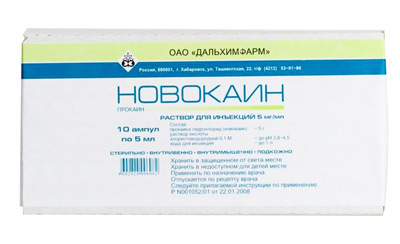 Drug therapy for acute conditions includes the establishment of Novocain blockades. The main goal is to remove the pain syndrome, which again leads to muscle tension in the lumbar spine. In parallel, drugs that improve blood supply, relieve muscle tension, are prescribed. Vitamin complexes and anti-inflammatory drugs. The patient must ensure complete peace and warmth.
Drug therapy for acute conditions includes the establishment of Novocain blockades. The main goal is to remove the pain syndrome, which again leads to muscle tension in the lumbar spine. In parallel, drugs that improve blood supply, relieve muscle tension, are prescribed. Vitamin complexes and anti-inflammatory drugs. The patient must ensure complete peace and warmth.
After the pain has been removed, it is necessary to proceed to procedures aimed at restoring the volume of movements in the back. To them carry out carrying out of medical physical culture. Exercises with a hernia of the lumbar spine are conducted with the instructor, in order to control the load on the body.
To begin with, simple and non-complex tasks are performed, as the body recovers, the load volume can be expanded. Classes are held both in a prone position and standing. Therapeutic physical training can be supplemented by massage, acupuncture, manual therapy, electrophoresis, magnetotherapy.
It is not rational to conduct all procedures at once, it's best to paint a sequence of exercises so that the result of the treatment received lasts as long as possible. Very good effect gives lessons in the pool, they can be performed with an instructor, and if the doctor allows, you can just swim. Complex sanatorium treatment should be mandatory, at least once a year.
Treatment with folk remedies is carried out as an addition to the main treatment. Basically, this method is aimed at reducing pain syndrome. Most often, honey or other bee products are used. By rubbing into the lumbar region propolis or bee venom, you can achieve a reduction in pain.
If you first rub your back with St. John's wort oil, and then apply honey, making light massage movements, and then cover your back with a warm scarf, you can achieve maximum relaxation of stressed muscles.
 Tincture of garlic on alcohol, is prepared for ten days, after preparation, a bandage, moistened with this tincture, is applied to the lesion and covered with a dense tissue. The cleaned leaf of the Kalanchoe is attached to the back area and left for the whole night. This is only a small part of what can be used for hernia lumbar spine.
Tincture of garlic on alcohol, is prepared for ten days, after preparation, a bandage, moistened with this tincture, is applied to the lesion and covered with a dense tissue. The cleaned leaf of the Kalanchoe is attached to the back area and left for the whole night. This is only a small part of what can be used for hernia lumbar spine.
Treatment of a herniated lumbar spine should begin with the earliest signs of the disease, even before the stage of formation of a true hernia. It is necessary to do this so that the process does not develop quickly enough. The more aggressive the disease, the greater the likelihood that it will require surgical treatment of this condition. The operation is indicated in the following cases:
- if conservative and restorative therapy does not give a permanent positive effect;
- signs of compression of the roots are constant;
- disease leads to a restriction of daily opportunities, a long stay on the sick leave.
At the moment there are several methods of surgical treatment. Complications after such treatment are rare, in general, the prognosis of the disease is successful and in most cases leads to complete recovery. How to operate depends:
- on the patient's age;
- from clinical manifestations;
- from the size of the intervertebral hernia;
- from the prescription of the disease.
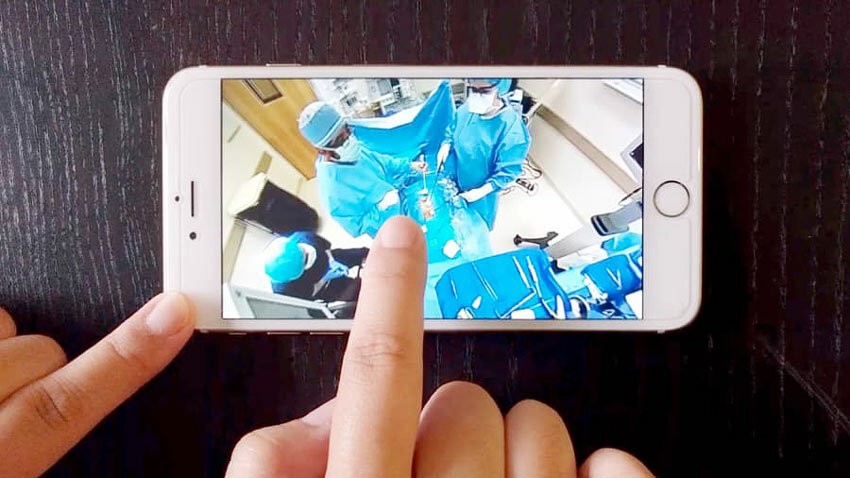 Based on all these facts, the doctor determines the tactics of surgery. Currently, minimally invasive surgical interventions are widely used. They are directed mainly at the removal of the hernia of the lumbar spine. The following types of operations are distinguished:
Based on all these facts, the doctor determines the tactics of surgery. Currently, minimally invasive surgical interventions are widely used. They are directed mainly at the removal of the hernia of the lumbar spine. The following types of operations are distinguished:
- endoscopic discectomy;
- nucleoplasty( percutaneous discectomy);
- laser exposure( vaparization);
- Laminectomy.
Endoscopic treatment of hernia of the lumbar spine is considered the most optimal. After such operations, the patient can be discharged after a few days. 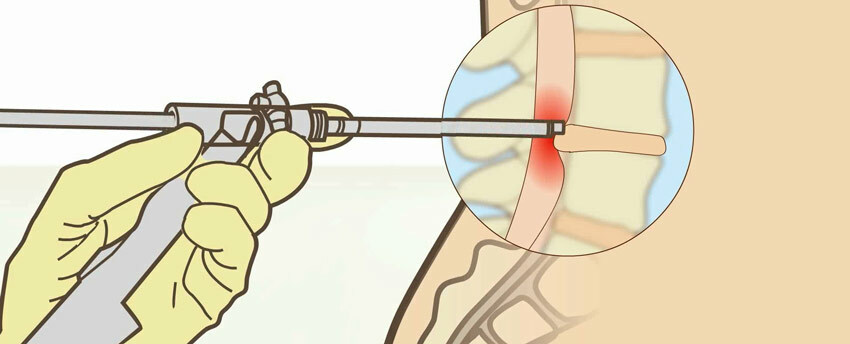
In terms of efficiency, they are not inferior to previous operations. It is believed that the removal of the hernia of the lumbar spine with similar methods is less traumatic. What kind of surgical treatment to choose from a particular patient is decided by the doctor, based on the survey and examination data. Of course, an important role is played by the presence of radicular syndrome and the size of the hernia itself.
When endoscopic treatment is performed, a minimal amount of surrounding tissues is traumatized, which contributes to a speedy recovery. With this treatment, recurrence of the disease is virtually eliminated.
Laser removal of herniated lumbar spine is carried out using a special needle and a laser light guide. Influencing the damaged disc, it decreases in size, which helps reduce pressure on the nerve endings. This technique is not radical in the treatment of this condition, therefore recurrence of the disease is possible.
Laminectamy is a method of treatment, which has been little used recently. This is due to the fact that during the operation there is a violation of the integrity of the spine, by partially removing the spines of the vertebral column. In the future, this can lead to a curvature of the spine.
The success of any surgical treatment depends on the volume of postoperative rehabilitation. We must not forget that after such treatment, we must comply with the protective regime, so as not to provoke the resumption of the disease in other segments of the lumbar region.
Prevention of the disease
 Since adolescence, you need to remember that the spine is also aging with time. To degenerate processes do not develop rapidly:
Since adolescence, you need to remember that the spine is also aging with time. To degenerate processes do not develop rapidly:
- to avoid dangerous traumatic situations;
- engage in general strengthening activities( walking, swimming);
- sleep should be sufficient and on the orthopedic mattress;
- to control weight.
Intervertebral hernia of the lumbosacral spine
Hernia of the lumbar spine can form at different sites, in the interval from the first to the fifth vertebra. If it affects only the lumbar segments, then talk about the hernia of the lumbar spine. Most often, the hernia is formed in the area between the fifth lumbar vertebra and sacrum, in this case they speak of the formation of the intervertebral hernia of the lumbosacral section.
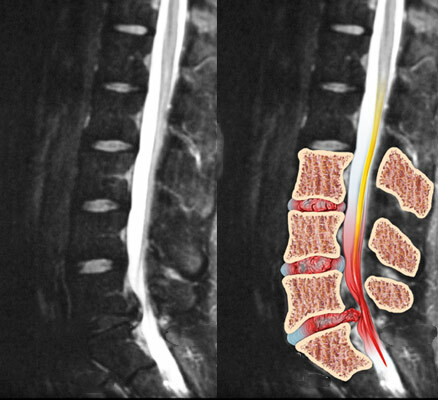
The picture of the disease with a hernia in the sacral region is similar to the signs of lumbar hernia. The tactics of treatment and patient observation are identical. According to general clinical data, it is difficult to more accurately indicate the localization of the hernial process, so in this case in the diagnosis of critical importance is the conduct of magnetic resonance imaging. Based on the results of the survey, the doctor can more accurately say where the process is localized.
Intervertebral hernia of the lumbosacral spine is subjected to both conservative and surgical treatment. We must not forget that during the examination, not one hernia can be diagnosed, in this case they speak of multiple hernias of the spine.
Hernia of the lumbar spine of the spine
In pediatric practice, physicians can often meet with such a condition as a Schmorl hernia. It is believed that this is an x-ray concept, since the first signs of the disease can be detected only when carrying out an X-ray.
In general, the disease is favorable, but we must not forget that after diagnosing this condition, the patient must comply with a number of rules. Hernia of the Schmorl can form in any part of the spine, but most often it forms in the lower back.
The causes of the Schmorl hernia are as follows:
- is not a balanced physical load on the spine or injuries;
- lack of calcium and phosphorus in the body, which leads to a decrease in bone strength;
- hereditary predisposition, related to the peculiarities of the structure of the vertebrae;
- rapid growth of the musculoskeletal system, especially in childhood;
- osteoporosis and malnutrition of bone tissue.
Schmorl hernia occurs in both adults and children. Since most often it is diagnosed in childhood, it can be said that this process is chronic. The course of the disease depends largely on the patient's lifestyle.
Structurally, the intervertebral disc is pressed into the spongy substance of the vertebra. When the process develops, there is no damage to closely located nerve endings and vessels. This is the main difference of this process from the intervertebral hernia.
It should be remembered that as a result of such changes, the so-called voids in the vertebrae are formed, this leads to thinning of the bone tissue, which in time can provoke compression fractures, which often accompanies this disease.
Symptoms of the disease are most often absent. But it should be noted that the patient can periodically feel pain in the lumbar spine, it is these complaints and encourage the doctor to appoint a survey on which this education is determined. Pain, as a rule, is noisy, which passes at rest and increases with exercise.

When examining the lumbar region, with a long enough disease, you can identify an intense muscular cushion in the lumbar region, which, when palpated, is manifested by increased pain. A sharp and cramping pain is not characteristic for this condition, as the nerve roots are not affected.
The hernia of the lumbar spine is chronic and, in a more mature age, additional changes occur in the vertebrae. These disorders( osteoporosis, microcracks of the vertebrae, osteochondrosis) can lead to other symptoms of the disease.
At the older age, patients note stiffness in movement, discomfort of the lumbar region, and do not experience severe pain. Patients experience increased fatigue, they need more time to recover.
Individual hernias can be asymptomatic for a long time. When diagnosing multiple hernias, complaints have a more persistent character. First of all it is noted:
-
 the appearance of chronic pain, even after a rest, no significant relief comes;
the appearance of chronic pain, even after a rest, no significant relief comes; - objectively on examination shows a violation of posture, physiological curves are smoothed, the body is tilted forward;
- as a result of increased fatigue, there is a decrease in the overall performance of a person.
Diagnosis of the disease consists of the collection of complaints, anamnesis of the disease and the detection of hereditary predisposition. An objective examination and conduct of neurological tests is mandatory. If there is a suspicion of this condition, the patient must necessarily be directed to the radiology examination of the lumbar spine. X-ray is a fairly informative method for this condition.
If complaints and suspicions first appeared during a woman's pregnancy, in connection with the redistribution of the load, then in such cases, magnetic resonance imaging is performed. The latter method of diagnosis is used in complex situations, when it is necessary to exclude the formation of the intervertebral hernia in addition.
Treatment of hernia Shmorlja
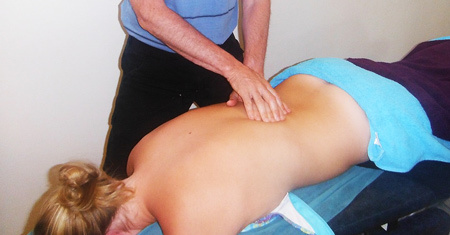 The main goal in the treatment of this condition is to improve the metabolic processes in bone tissue, improve local blood circulation. In the aggregate of normalization of these facts, we will get a reduction in the pain syndrome and muscular tension in the back. With the normalization of the basic functions of the spine, the probability of complications of this condition decreases. The most commonly prescribed analgesics and anti-inflammatory drugs. Medications that improve bone structure and slow the aging process. Vascular medications help restore normal blood supply. Operative treatment with hernia Schmorlja is not carried out.
The main goal in the treatment of this condition is to improve the metabolic processes in bone tissue, improve local blood circulation. In the aggregate of normalization of these facts, we will get a reduction in the pain syndrome and muscular tension in the back. With the normalization of the basic functions of the spine, the probability of complications of this condition decreases. The most commonly prescribed analgesics and anti-inflammatory drugs. Medications that improve bone structure and slow the aging process. Vascular medications help restore normal blood supply. Operative treatment with hernia Schmorlja is not carried out.
After the main therapy should not forget about the recovery period. It includes:
- manual therapy, acupuncture and massage;
- physiotherapy( electrophoresis, magnetotherapy and others);
- exercise therapy, gymnastics and swimming pool;
- treatment with leeches and bees.
Carrying out all the necessary recommendations and preventive measures, the quality of life of the patient under these conditions will not suffer.

